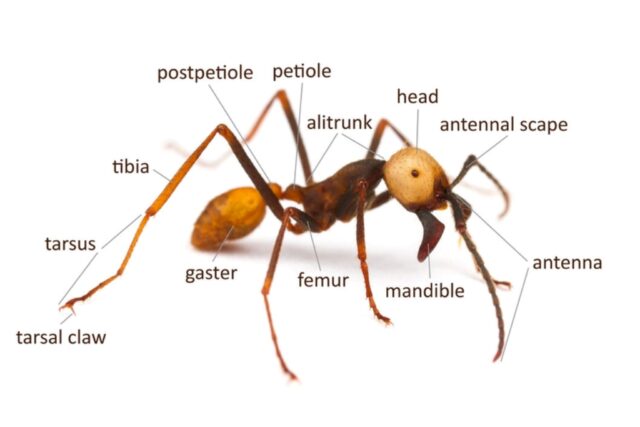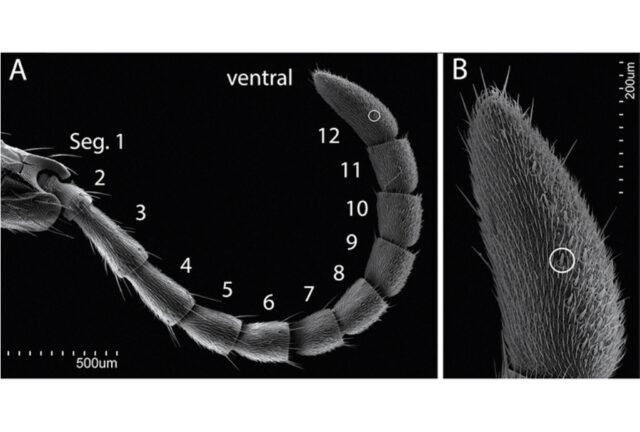An interdisciplinary work between scientists from the University of Costa Rica (UCR) and several universities in the United States allowed one of the most in-depth investigations to date on the Arriera ant, the most important species in the country.
The work started with taking samples at the La Selva Station, in Sarapiquí, in order to discover the secrets of their genes. This made it possible to find where the hereditary information is and the transmission to their offspring.
Mule ants, like others of their genus, are social insects and are the predator of their kind in the tropics. They are present from southern Mexico to northern Argentina.
Their main characteristic is that, as hunters of other ants and invertebrate organisms, they act as a team and in a massive way. This behavior makes them very successful from an evolutionary point of view.
According to ant specialist Daniel Kronauer, from an ecological point of view, a colony of mule ants is a top predator, just like a jaguar in the forest. Studies show that a colony of these ants hunts between 30,000 and 50,000 invertebrates per day, which has a huge impact on an ecosystem.
One of the main findings of the study is that an expanded system of sensors was observed in the antennas of the ants. Scientists assume that this helps them to detect their prey and distinguish other aspects of the environment.
“Tropical species tend to be less studied, because we have fewer resources. In the case of ants, other species have been sequenced, but not of importance in this part of the world”, said Adrián Pinto; researcher at the Center for Research in Microscopic Structures (Ciemic) and the UCR School of Medicine.
Deciphering the Costa Rican jungle through high technology
The ants collected in Sarapiquí traveled to Wisconsin, Chicago and Rockefeller universities; where they were in charge of the genetic analysis by means of bioinformatics tools.
The process implied a challenge, yes, to maintain the quality of the collected material. “We have the possibility of freezing the samples immediately at -80 ° C, to ensure that the material is maintained in the best way possible and the desired information can be obtained,” said Ciemic researcher Catalina Murillo.
For genetic analysis, DNA was extracted from workers and males. Queens were not included due to the difficulty of collecting them, as the entire nest would have to be destroyed.

The study, published last September in the journal Molecular Ecology, reports among its findings that the genome of the arriera ant analyzed is smaller than that of other ants. However, the scientists found that the workers possess an anatomical adaptation or lobe in the antennae. There they have a very important group of receptors for smell.
“This shows us that to act as a team, the mule ants have an expansion in the communication genes, which is called the chemosensory system; to be able to carry out the activities that their survival requires”, explained Pinto.
Mules have about 200 receptors, while other ants have between 100 and 150. Although researchers still do not know what the function of these expanded receptors in mules is, they believe that they could be important in finding ant species and nests. they consume.
In previous experiments with other ants, Kronauer of Rockefeller University and a participant in the study showed that these sensory receptors play a vital role in communication between ants. This is produced by means of chemicals (pheromones).Therefore, knowing the genome of E. burchellii “is a resource that we did not have before and that will make it easier for us to carry on.
Secrets even in the antennae of ants
The genomic information found in the antennas of the ants was confirmed by means of scanning electron microscopy.This work was done at the Ciemic of the UCR. There, photographs were taken that verify the presence of certain structures in the antennae of the female ants of the arrieras.

“The cherry on the cake was missing, because what bioinformatics information tells us are possibilities of things that are being expressed and are present in the genome,but cannot be visualized. The photographs are the visual evidence of what was found at the genetic level,”said Murillo.
With the scanning electron microscope, an enlarged image is obtained by scanning a sample with a beam of electrons, which are captured by different detectors to form an image. With this equipment you can visualize the three-dimensional structure of a surface with high resolution.
Small parts, like those of insects, are very complex, detailed researcher Murillo. “Electron microscopy lets us see all that complexity that is in small things. Sometimes we think that because they are small they are simple ”, he added.
At the base of the ant’s antenna, for example, a perfect anchoring system was observed, similar to some mechanical structures seen in bridges.ut other genetic and molecular research in the future,” he said.

